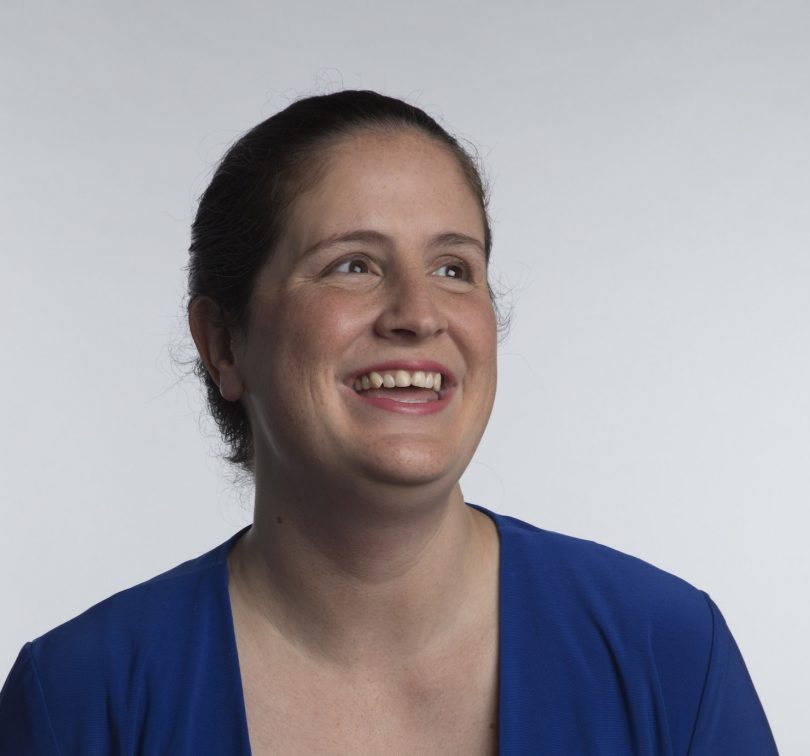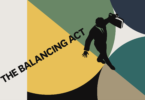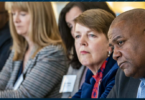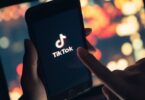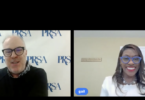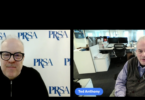Rachel Carver’s challenges during the COVID-19 crisis could have been far more pronounced than those of many other PR professionals. Despite being born blind, she is now entering her 10th year in the profession. In 2017, she earned her Accreditation in Public Relations.
Carver, APR, is a senior public relations specialist for Outlook Business Solutions, a company in Omaha, Neb., that provides businesses with marketing and other services while seeking to create inclusive, integrated work environments for talented professionals who are blind or have low vision. About half of the company’s employees live with vision loss.
Outlook Business Solutions also manages marketing for its sister company Outlook Nebraska, which makes paper towel and toilet tissue products for the federal government. According to its website, Outlook Nebraska employs more than 60 visually impaired individuals at its Omaha production facility, and is the region’s largest employer of blind people.
The company operates under AbilityOne, a federal program that creates employment and training opportunities for people who are blind or have other severe disabilities.
After working from home for part of the spring and early summer, Carver has been returning to her office several times a week. To mark National Disability Employment Awareness Month in October, Carver talked to PRsay about her work-from-home challenges during COVID-19 and how technology has evolved for blind and visually impaired people.
As the coronavirus pandemic took hold in March, many workers around the country started working from home if they could. What was your situation?
I was sitting in my office on a Thursday in March, listening to the news and hearing about the number of coronavirus cases rising. I knew it was coming and I was in the process of making the decision to pull my son Daniel out of preschool, which we ended up doing. A companywide email arrived later that morning stating that, until further notice, everyone who can work remotely will.
What were some of your initial obstacles to remote work?
I didn’t really have a home office. I had used the kitchen table when I had previously worked from home. It didn’t matter [then] because no one else was there.
But when [the coronavirus lockdowns began and] my son started staying home with me, for a few days, I was making it work at the kitchen table and then I said, “I can’t.” We have a three-bedroom house. The third bedroom was our guest room/storage room, so I organized that space and it became my home office.
Now I have a pretty nice setup. We still have the bed frame [in my home office], but we took it apart. So if I have the camera on during a Zoom meeting, you get a nice shot of a mattress leaning against the wall!
How did you and your husband Kevin make homeschooling work for your son?
Like many parents, we split up the day [between our work and homeschooling]. I would often work on the weekends too, because it was rare that I [had the chance to work] a full eight-hour day. Your days are broken up when you have kids at home. But I remember feeling thankful because there were so many people getting laid off from their jobs.
How has the technology you use for work evolved?
Because of technology and having a laptop, the transition to working from home was pretty easy for me. The technology that I use didn’t change between working in the office and working at home.
I use JAWS, a screen reader for Microsoft Windows. If you have the skills and are proficient in that adaptive software, you can work at home just like a sighted co-worker would. Anything you would see on your computer monitor, like scrolling through your e-mail or the web or formatting a Word document, JAWS can read aloud to you from the screen. So instead of me seeing, I’m listening to everything that’s on my computer. We use Microsoft Teams, Microsoft Outlook and Zoom — a lot of the same apps that you all probably use.
I also use Voiceover, the screen reader that comes on Apple devices, which is handy because all I had to do is buy my phone. I don’t have to buy another software package.
The technology has come a long way, and I would not be able to do the job I do without it.
October is National Disability Employment Awareness Month. In your work with the National Industries for the Blind, which helps state and private nonprofit agencies participate in the AbilityOne program, what are your thoughts on promoting that awareness?
National Disability Employment Awareness Month is a great opportunity for organizations to highlight their blind employees. Education is so important — getting the word out to employers, educators and others that people with disabilities are just as capable in the workforce. It might mean I’m going to do a task differently than you, but I’m still going to be able to do it.
John Elsasser is PRSA’s director of publications. He joined PRSA in 1994.

